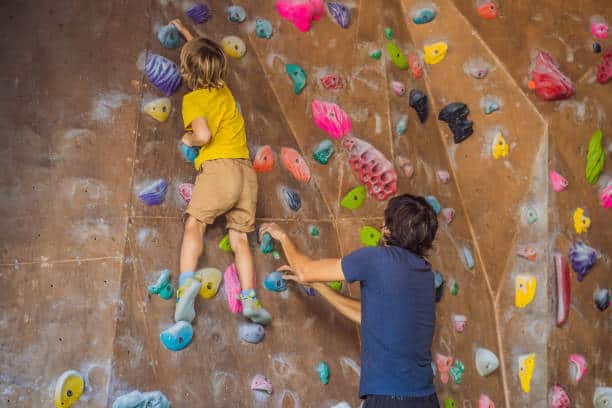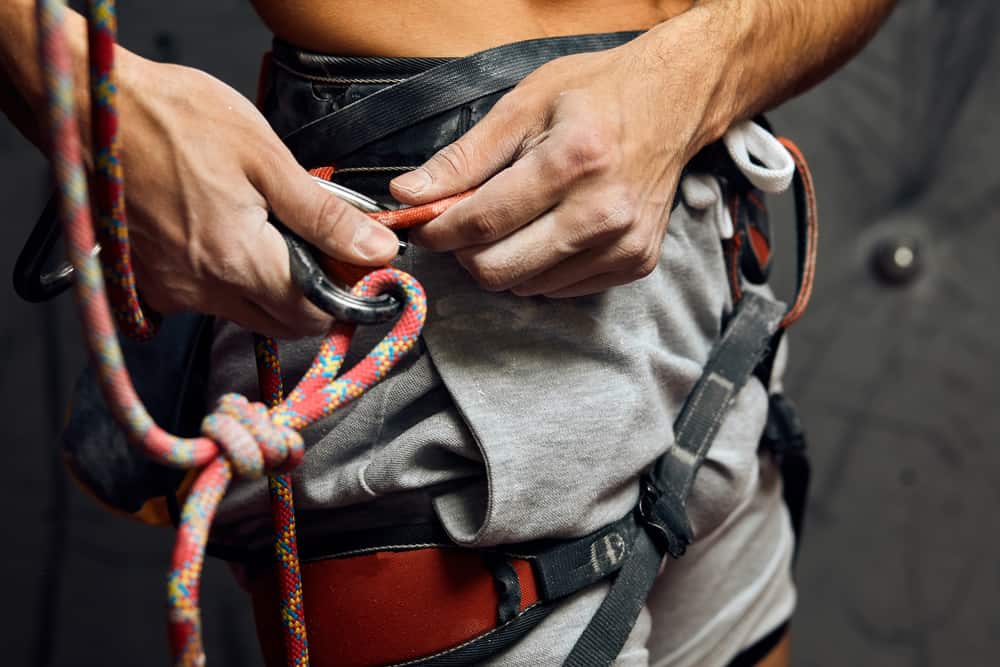Bouldering is a great way to get a workout without committing to a long climbing session. It also allows you to focus on problem-solving and technique rather than relying on a partner to help you through difficult passages. However, bouldering can be dangerous if you are not experienced enough, and it can be easy to exhaust yourself quickly if you are not in good shape.
On the other hand, top roping is a safer way to climb if you are new to the sport. It also allows you to rise at a higher difficulty level than bouldering, and it is easier to learn the basics of belaying and rope handling. However, top roping can be more monotonous than bouldering and finding a partner who is available when you want to climb can be challenging.

Ultimately, the decision to boulder or top rope is up to the individual climber. Both activities have unique benefits and drawbacks, so choosing the one that best suits your needs and interests is essential.
Table of Contents
5 Things to Know Before Your First Bouldering Competition

As someone relatively new to bouldering, I found the prospect of competition daunting. After all, it’s one thing to boulder in your own time, in your own space – quite another to do so under the watchful eye of others. Here are five things that will help you prepare for your first bouldering competition.
- Familiarize yourself with the format. Most competitions involve several problems (or “routes”) to be completed in time. There may also be a section for finals, where the top competitors from the earlier rounds compete for the best score on one problem.
- Practice, practice, practice. Before competing, you’ll want to be comfortable with as many problems as possible. This means physically mastering the moves and knowing how to solve them quickly.
- Watch other climbers. Not only is this a great way to learn new techniques, but it can also give you an idea of what to expect from the competition routes.
- Stay calm and focused. It’s easy to get overwhelmed in a competitive setting – but remember that you’ve practiced and know what you’re capable of. Take your time, and don’t rush through the problems.
- Have fun! Climbing is supposed to be enjoyable, so don’t forget to enjoy yourself while competing.
5 Mistakes Beginners Make When Bouldering
Bouldering is a great way to get into climbing, but like any other activity, beginners make common mistakes. Knowing what they allow you to avoid them and have a more successful bouldering experience.

- Focusing too much on the difficulty of the problem. When you’re first starting, it’s natural to want to try the most complex problems you can find. However, focusing on your skill level is essential, and not pushing yourself too hard. Start with easier problems and work your way up gradually. This will help you build strength and confidence and avoid injury.
- I am not using a spotter. A spotter is someone who stands behind you and watches out for your safety while you climb. If you fall, they will catch you. Bouldering without a spotter is very dangerous, so always use one if you can.
- Climbing without a crash pad. A crash pad is a thick mat that you place under bouldering problems to protect yourself if you fall. When starting, it’s a good idea to use one as often as possible. This will help keep you safe and prevent injuries.
- You are not paying attention to your body. It’s essential to be aware of your body when bouldering. Make sure you’re stretching and warming up properly before climbing, and listen to your body when it tells you it’s tired or injured. Pushing yourself too hard can result in injuries, so take it easy until you’re stronger.
- Not taking breaks. Bouldering can be strenuous, especially if you’re new to it. It’s essential to take breaks often so that your muscles can recover. Don’t push yourself too hard, or you’ll become tired and sore.
The Benefits of Bouldering Overtop Roping
The importance of bouldering over top roping is that it is a more intense and physical form of climbing. It also requires more focus and strength, which can help you when you start top roping. It also teaches you how to move on the rocks and find the best routes.
Bouldering is more strenuous and physical than top roping, which can help you. It needs focus and strength, which can aid with top roping. It teaches rock climbing and route finding. These benefits can improve your top-roping experience.
How to Get Started in Bouldering

Bouldering is a hard way to start climbing that requires a lot of physical effort. It takes concentration and strength, which can help with top roping. Bouldering teaches you how rocks move and how to find the best paths through them. When you start top-roping, this will help you find the proper routes.
Top roping is another technique to start climbing, but it’s not as strenuous as bouldering. You are learning to move on rocks, and discovering the optimal routes doesn’t take as much focus or power. This can be handy when you start top roping because you’ll know the best ways.
If you want to boulder, you should know a few things. First, bouldering is a more strenuous climbing, requiring greater focus and strength. It teaches you how to maneuver on rocks and identify the best paths, which helps while top roping.
Find a gym or outdoor climbing place to start. You can also take classes and obtain tips from experienced climbers. Once you’ve mastered the basics, attempt new routes and challenges. You’ll be a pro climber with practice.
The Gear You Need for Bouldering

Bouldering is a great way to get in a good workout and can be a lot of fun. But before you start bouldering, you must ensure you have the right gear. This includes a bouldering mat, shoes, and chalk. You may also want to invest in a crash pad if you’re planning on doing a lot of bouldering.
These are essential pieces of gear, and without them, you could be risking yourself. Make sure you have all the necessary equipment before you start climbing, as it can be dangerous to climb without it. Now that you know what gear you need, you might wonder if bouldering is better than top roping.
Top roping is the safest form of rock climbing. Top roping involves climbing an anchored rope at the route’s top. Your belayer will be there to catch you if you fall. Top-roping is straightforward to master for novices. It’s less technically demanding than bouldering.
Bouldering is more complex than climbing. Without a rope, you could fall far. Bouldering mats protect you from injury if you fall. Bouldering is more complex than top roping because it requires more technique. Many climbers prefer it to top-roping.


